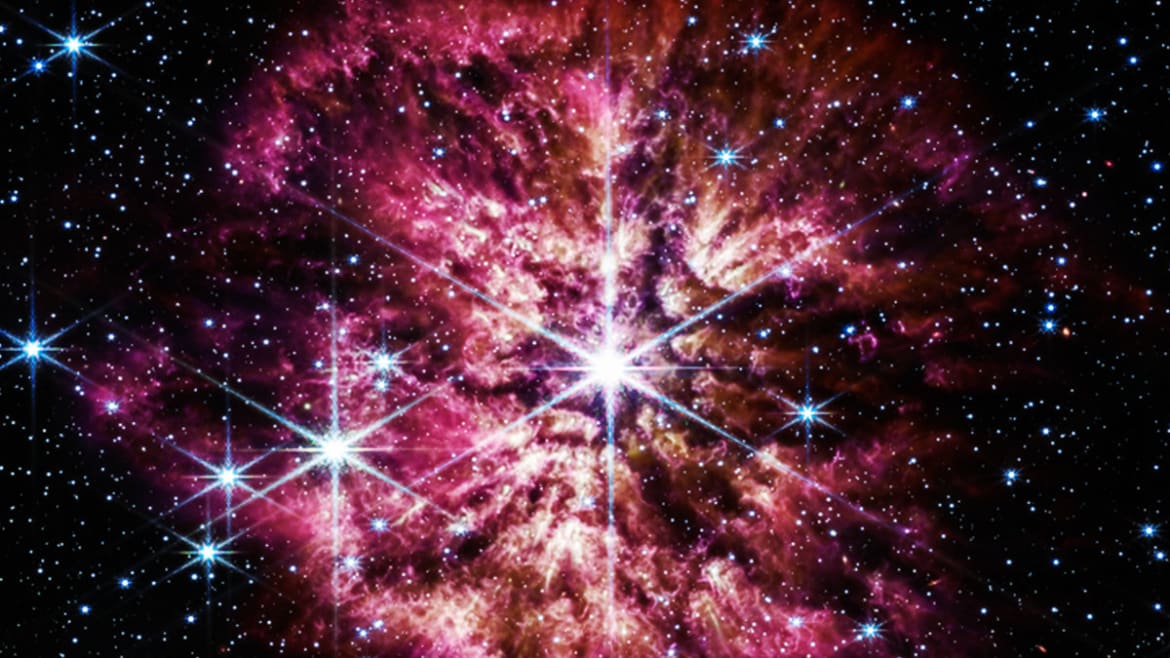NASA, ESA, CSA, STScI, Webb ERO Production Team.
NASA’s James Webb Space Telescope just delivered one of its most stunning pics yet—and it was actually one of the first objects the spacecraft spotted when it went into orbit in 2022.
In June 2022, Webb observed a star named WR 124, one of the most enormous and brightest detectable stars in the observable universe. The celestial body is roughly 15,000 light-years away from Earth, and about 30 times the size of our sun.
NASA astronomers had the rare opportunity to peer at it using Webb’s Near-Infrared Camera and Mid-Infrared Instrument. This allowed a rare look at the WR 124 as it went through a star phase dubbed Wolf-Rayet, or the process in which a star sheds off its outer layers before going into supernova.
Got a tip? Send it to The Daily Beast here

